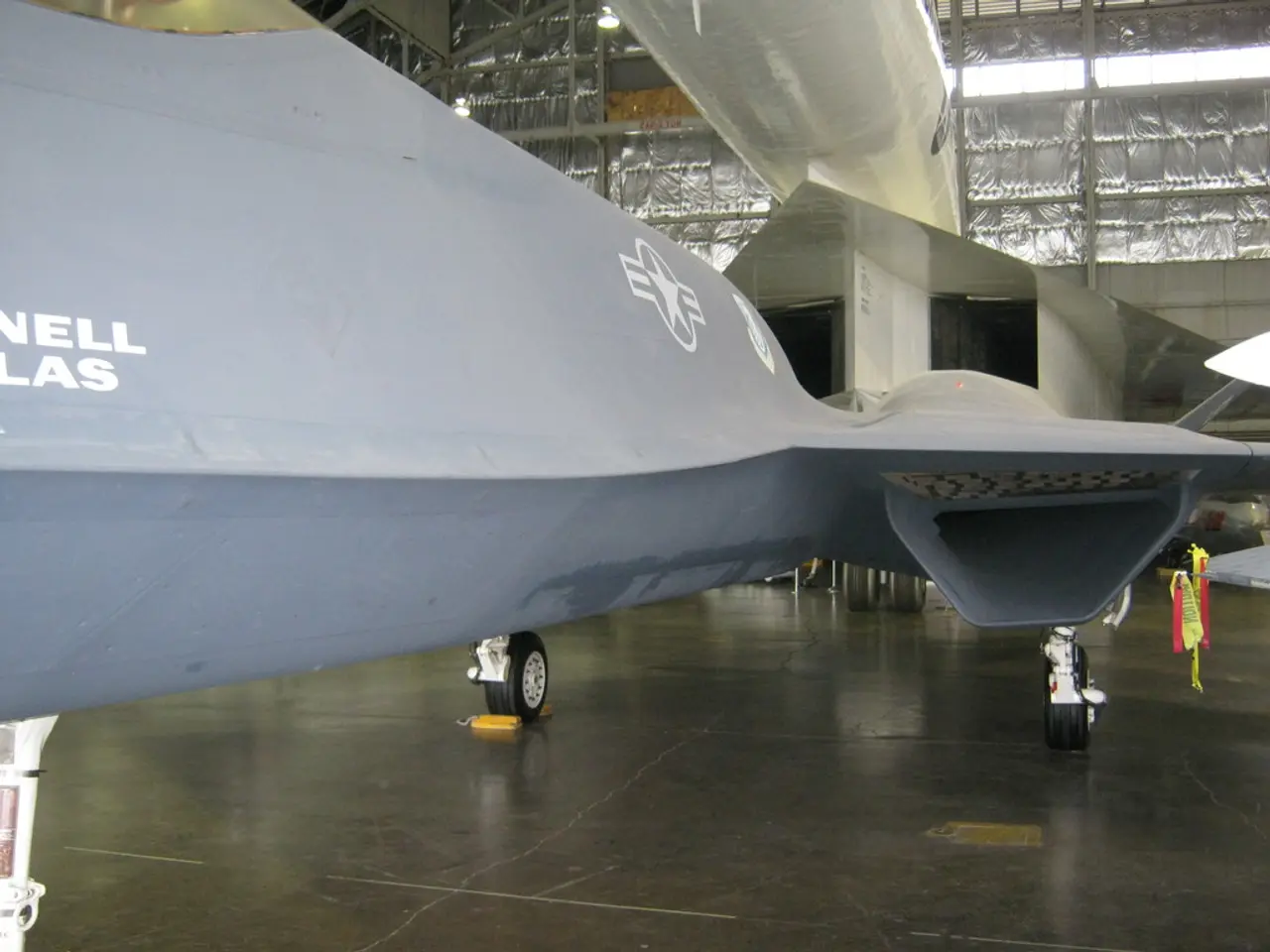Detailed Insight into Regional Aviation and Freight Services: Encompassing 2025 Insights
Asia-Pacific continues to dominate the market, accounting for nearly 35% of total cargo volume, and the top regional airlines and cargo services in 2025 stand out due to superior performance, extensive and dynamic networks, growing sustainability efforts, and strong customer experience innovations.
Regional Airlines
JSX, a leading player in the regional airline sector, boasts a remarkable customer satisfaction score of 92.29 in Travel + Leisure’s World's Best airline survey, far ahead of larger carriers like Hawaiian Airlines and Alaska Airlines. JSX distinguishes itself by offering a private jet-like experience, utilizing fixed-base operators (FBOs) and private lounges that allow quick check-ins within 20 minutes. It has maintained a Four-Year APEX Five-Star rating, reflecting its consistent service excellence and customer experience innovation. In 2025, JSX is expanding by adding turboprop services to its fleet, enhancing its regional connectivity.
WestJet Encore and On-Board Regional Partners provide robust regional service with a network that includes interline agreements with smaller carriers such as Central Mountain Air, Pacific Coastal Airlines, PAL Airlines, Air North, and Canadian North. This model extends WestJet’s reach into remote Canadian communities. WestJet’s recent corporate changes, including Delta and Korean Air investments, indicate financial strengthening and network integration.
Porter Airlines operates from city-centre Billy Bishop Toronto City Airport with turboprops and has expanded with jets at Toronto-Pearson and Ottawa hubs. Porter’s joint venture with Air Transat increases its network connectivity for leisure markets to Europe and sun destinations.
Air Greenland has notably expanded its small, polar-rooted network with new routes and a modernized A330neo fleet offering quiet comfort on long-haul routes. Its strategy blends local culture with a high standard of hospitality, gaining praise for customer experience and sustainable growth.
Cebu Pacific has risen as a major leisure carrier in Asia, connecting major cities globally with Philippine vacation hotspots. Fleet modernization and a focus on customer experience improvements have helped it compete effectively.
Cargo Services
The air cargo network in 2025 continues to evolve with significant regional shifts. Emerging node cities in Asia, such as Zhengzhou and Chongqing in China, have gained prominence as key cargo hubs, driven by industrial relocation and market dynamics. Traditional hubs face declining roles, while new hubs fulfill rising regional and transit demand. This shift is tightly linked to global economic transformation and the Belt and Road Initiative (BRI) impact.
Cargo services rely on maintaining core-periphery structures in freighter and belly-hold routes but adapt based on evolving industrial geography and consumer needs, emphasizing network connectivity and efficiency.
What sets these leaders apart
| Criterion | Leading Regional Airlines | Leading Cargo Services | |---------------------|-------------------------------------------|-----------------------------------------------| | Performance | High customer satisfaction (e.g., JSX 92.29 score), consistent APEX 5-Star ratings[1]; improved onboard services (Air Greenland, Cebu Pacific)[1][3] | Stable and evolving network hubs with fast adaptation to industry shifts; efficient core-periphery structures[4] | | Network | Expanding regional reach with turboprops (JSX), interline and joint ventures extending services (WestJet, Porter)[1][2] | Dynamic node-city growth (Chinese hubs Zhengzhou, Chongqing) serving as cargo transit points[4] | | Sustainability | Incorporation of fuel-efficient aircraft (A330neo for Air Greenland); sustainable growth aligned with local culture[3] | Integration with economic shifts including BRI, leading to optimized, potentially greener cargo routes[4] | | Customer Experience | Private-jet style services with quick check-in and lounges (JSX)[1]; blending regional culture with hospitality (Air Greenland)[3]; leisure-focused connectivity (Cebu Pacific)[3] | Cargo service improvements linked to reliability and capacity in connection with industrial and economic needs[4] |
In the Middle East, cargo services are expanding, driven by strong trade links with Asia and Europe. Utilizing dedicated freighter aircraft can enhance load capacities, offering a reliable transport option for businesses needing rapid movement of goods. Investing in sustainability is becoming increasingly important, with over 50% of companies prioritizing eco-friendly practices by 2025.
Data analysis shows that partnerships can reduce costs by up to 15% due to shared resources, optimized routing, and combined management systems. Smart temperature-controlled storage solutions utilize IoT sensors to monitor conditions in real-time, improving compliance with strict food and pharmaceutical transport regulations. Robotics in warehousing is streamlining operations, decreasing labor costs by 20% while increasing throughput.
Data-driven decision-making is becoming standard practice for optimizing routes and schedules, resulting in fuel savings of approximately 15% and improving delivery timelines. Europe's air freight market has also seen growth, with a notable 2.5% increase in volume.
Regular maintenance checks on aircraft and equipment are essential to prevent mechanical failures. China leads with over 18 million tonnes transported, reflecting a strong rebound in manufacturing and exports. In the first quarter of 2025, regional carriers recorded a 15% increase in cargo traffic, reflecting sustained demand for quicker delivery times.
Predictive analytics is becoming vital for inventory management, reducing excess storage costs by up to 35%. Utilizing augmented reality (AR) for training staff can enhance efficiency, facilitating quicker onboarding and skill development. Adapting to shifts in global supply chains is essential for cargo operators.
In 2025, global air freight volumes reached approximately 60 million tonnes, a 3% increase compared to the previous year. Drones can complete deliveries within one hour in urban areas, attracting investments that increased by 25% in the last year. Approximately 20% of total freight traffic was handled through partnerships in 2025, demonstrating the increasing trend toward collaborative logistics networks.
North America follows closely, moving about 25% of global cargo, with major hubs like Chicago O'Hare and Memphis International handling significant traffic. The United States recorded a substantial 4% year-on-year growth in air freight, with e-commerce contributing significantly to this trend.
Transitioning to sustainable fuels and reducing carbon footprints not only meets regulatory demands but also attracts environmentally conscious customers. Perishables and pharmaceuticals have seen the highest demand, with a 10% rise in temperature-controlled shipments. Implementing automated sorting systems significantly boosts cargo processing time.
Compliance with regulations from bodies such as the Federal Aviation Administration (FAA) and International Air Transport Association (IATA) is critical. Blockchain technology is transforming visibility in supply chains, enhancing traceability of shipments. To maximize advantage, operators should consider diversifying service offerings, providing shared capacity on flights, and promoting direct routes to key destinations.
Meeting safety requirements is paramount for maintaining operational integrity within freight transport. Incorporating advanced technologies like AI and blockchain can streamline operations, improving efficiency and enhancing customer satisfaction. Incorporating security plans that comply with local laws and international guidelines can help prevent unauthorized access and protect assets.
Building service networks in these areas may open new revenue streams for smaller operators. Establishing a transparent incident reporting system can help reduce the risk of recurrence and educate staff. Implementing a robust Safety Management System (SMS) can proactively identify and mitigate risks, reducing accident rates.
Emerging markets show potential for cargo expansion, with regions like Southeast Asia expected to experience an annual growth rate of over 7% in air freight traffic. In 2025, air freight demand saw an uptick of 8% compared to 2023, driven largely by e-commerce growth and a surge in online shopping.
Operators with strong SMS in place have demonstrated up to a 50% decrease in reportable incidents. Companies that leverage partnerships report an average increase of 10% in on-time deliveries, a critical metric in cargo services. All personnel involved in cargo handling must receive proper training, including understanding hazardous materials handling and emergency response protocols.
All in all, the top regional airlines and cargo services in 2025 continue to evolve, with a focus on customer experience, sustainability, and network expansion. By adapting to changing market dynamics and embracing technological advancements, these leaders are setting the stage for a more efficient and eco-friendly future in the aviation industry.
IndustryIn 2025, the aviation industry showcases a focus on transformative change as top regional airlines and cargo services prioritize customer experience, sustainability, and network expansion.
FinanceInvestments in partnerships and eco-friendly practices by over 50% of companies by 2025 can reduce costs by up to 15% through shared resources, optimized routing, and enhanced efficiency.
TransportationIntegration of technologies like AI, blockchain, and IoT in the transportation industry is streamlining operations and enhancing customer satisfaction while meeting safety and regulatory requirements.
LifestyleRobotics in warehousing is reducing labor costs by 20%, and smart temperature-controlled storage solutions are ensuring compliance with strict food and pharmaceutical transport regulations.
AviationOver 20% of total freight traffic in 2025 was handled through partnerships, demonstrating the increasing trend toward collaborative logistics networks. The use of drones for deliveries also gained popularity, with investments increasing by 25%.
TravelRegional airlines like JSX and Air Greenland are offering unique customer experiences, such as private-jet style services and regional culture-blended hospitality, setting new standards in the travel sector.








